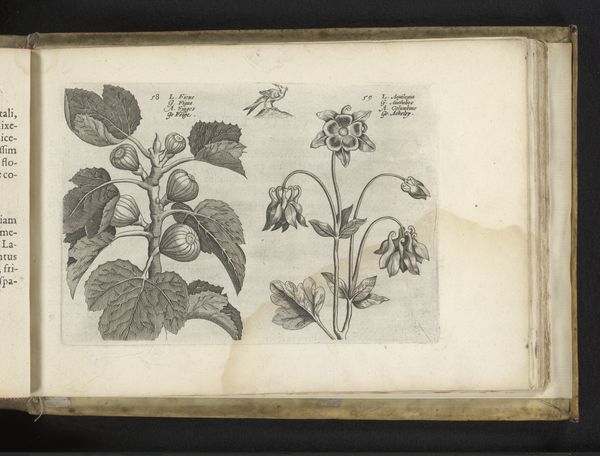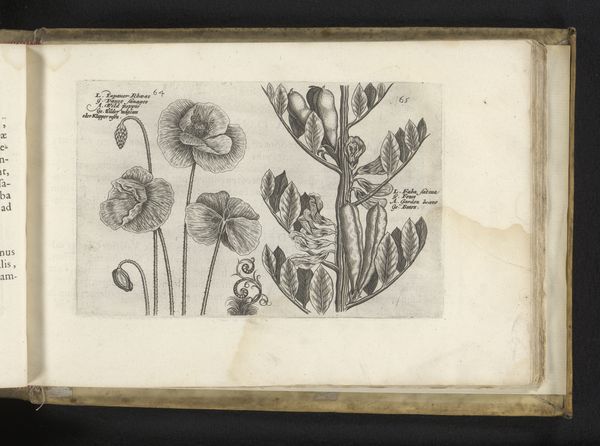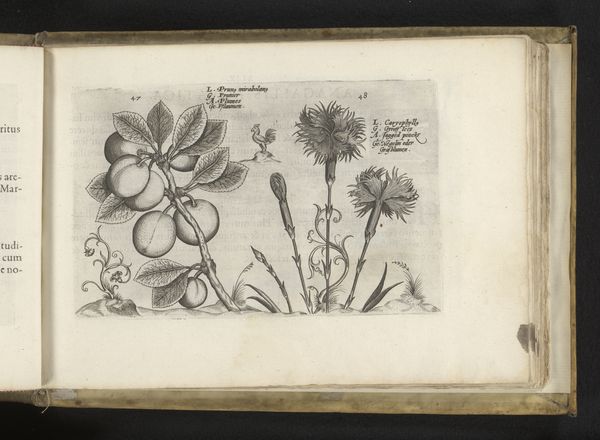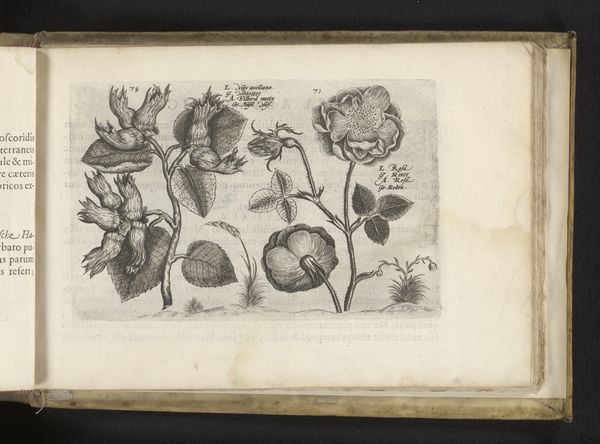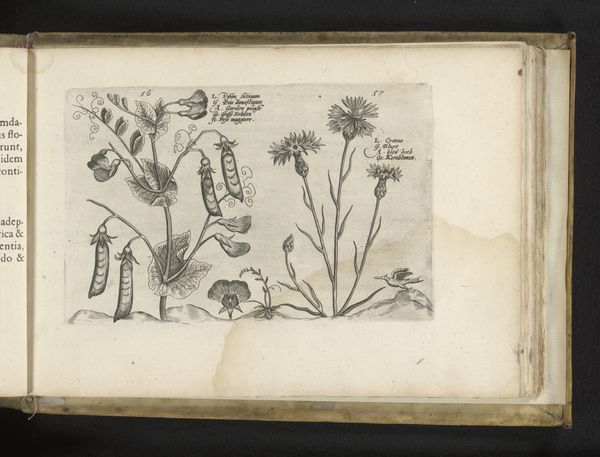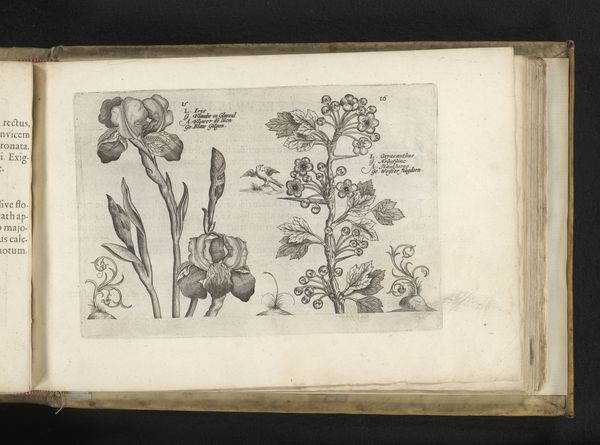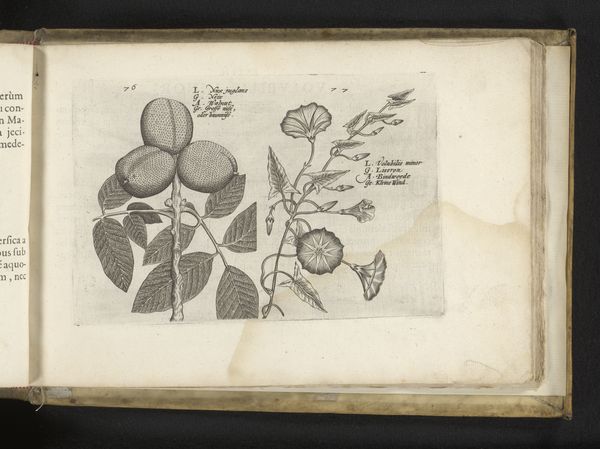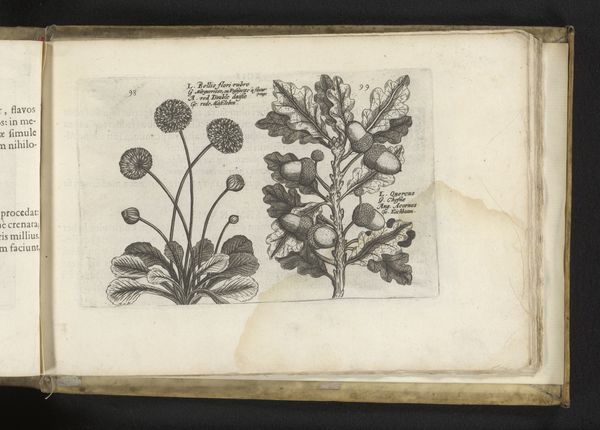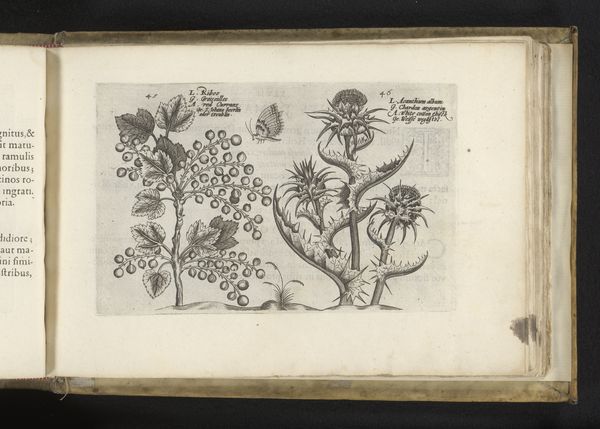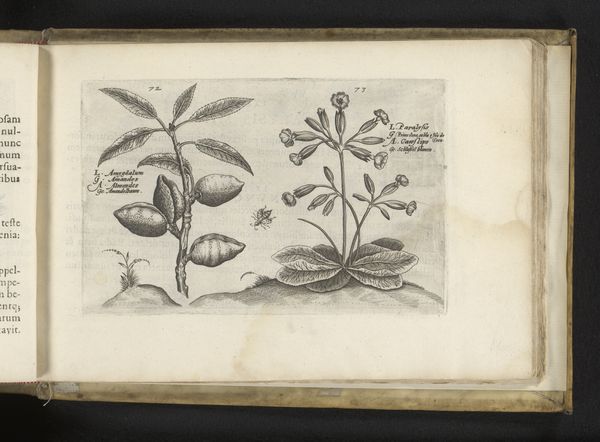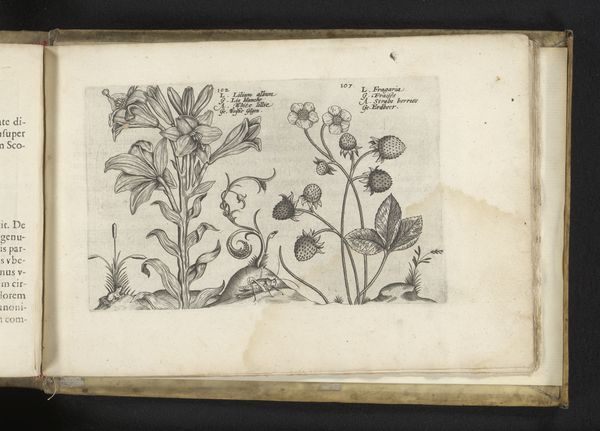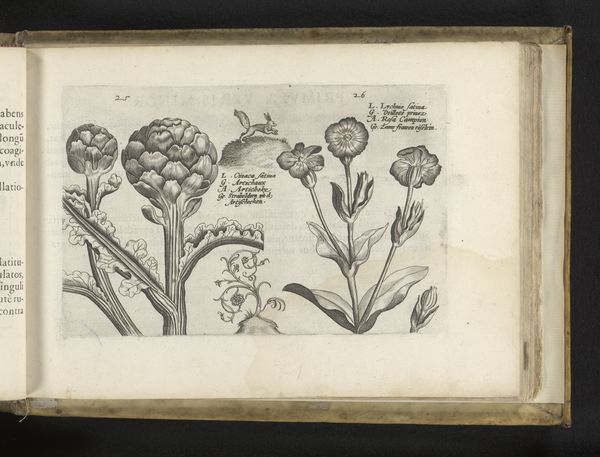
drawing, print, paper, engraving
#
drawing
#
baroque
# print
#
paper
#
engraving
Dimensions: height 129 mm, width 203 mm
Copyright: Rijks Museum: Open Domain
Curator: Editor: This is "Tuinanjer en citroen" by Crispijn van de Passe II, created in 1617. It’s an engraving on paper. There’s something very methodical and almost clinical about the arrangement, like a page from a scientific study. What historical context informs how we should look at this image? Curator: Precisely. Think about the burgeoning scientific revolution in the 17th century and how that influenced visual representation. These detailed studies of flora and fauna weren’t simply objective records. Consider how power dynamics intersected with the desire to classify and understand the natural world. For whom were these images created, and what purpose did they serve beyond scientific documentation? How does it uphold existing power structures? Editor: It strikes me that these images, although meant for scientific pursuits, also carry undertones of colonial exploration and extraction, doesn’t it? A way to catalogue and "own" nature’s resources through imagery. Curator: Exactly! These images participate in constructing a very specific vision of the world. Think about the act of isolating these specimens – a carnation, a lemon, even a bird. It’s about control and categorization but also about detaching these things from their original environments, reducing them to objects for consumption – both visually and literally. Consider who had access to such imagery, and how this access might have shaped their perception of the world. How do you feel it would have differed according to gender or socioeconomic background? Editor: It’s made me think more deeply about how seemingly objective scientific imagery can be loaded with cultural and political implications. I will definitely think twice next time! Curator: Me too! Recognizing the power dynamics embedded within seemingly neutral images is the first step to questioning and disrupting them.
Comments
No comments
Be the first to comment and join the conversation on the ultimate creative platform.
